Carrots
Known for their crunchy texture, orange color and slightly sweet taste, carrots are a popular garden staple. Growing carrots is relatively easy and they’re generally carefree, with little pest or disease problems. That being said, it never hurts to have information about carrots, covering all aspects of their care. Our tips can help reduce the likelihood of any issues that do pop up when caring for carrot plants.
Carrots
-

How To Tell When Carrots Are Ready To Harvest
Carrots are easy to grow in a garden with deep, loose soil. Learn how to know when carrots are ready to harvest here.
By Jackie Carroll
-

Do Multi-Colored Carrots Taste Different Than Orange Carrots?
Rainbow carrots aren’t as new as we might think. Click here to learn about different carrot colors and flavors.
By Laura Miller
-

Chantenay Carrot Info: Guide To Growing Chantenay Carrots
When gardeners have successfully grown and harvested carrots, they usually try new varieties each year. One versatile carrot variety recommended by many carrot lovers is the Chantenay carrot. Click this article for tips on growing Chantenay carrots.
By Darcy Larum
-
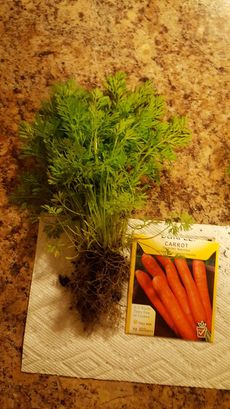
My Carrots Do Not Develop: Troubleshooting Carrot Growing Problems
Getting carrot plants to form roots or carrot roots that become gnarled are among the more common carrot growing problems. The following article centers on how to get carrots to grow properly. So if you have carrots not forming, click here to learn more.
By Amy Grant
-
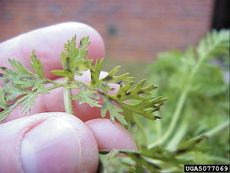
Carrot Leaf Blight Control: Treating Leaf Blight In Carrots
Carrot leaf blight is a common problem that can be traced to several different pathogens. Since the source can vary, it?s important to understand what you?re looking at in order to best treat it. This article will help with that and how to manage carrot leaf blight diseases.
By Liz Baessler
-
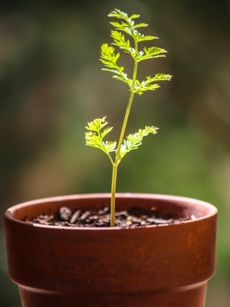
Growing Carrots In Containers - Tips For Growing Carrots In Containers
Growing carrots in containers is an excellent project for early spring or fall. Planting a crop of container carrots during these seasons can result in a worthwhile harvest. Learn more about container growing carrots here.
By Becca Badgett
-
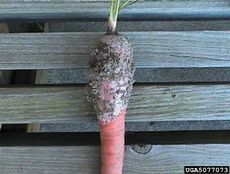
Southern Blight On Carrots: How To Manage Carrots With Southern Blight
Carrot southern blight is a disease that coincides with warm temperatures close to harvest. What is southern blight on carrots? Click this article to learn how to identify carrots with southern blight and if there are any methods of southern blight carrot control.
By Amy Grant
-

Carrots In The Heat Of Summer – How To Grow Carrots In The South
Growing carrots in the heat of summer can be difficult, as they are a cool-season crop. Ideally, carrots are sown when it's warm and mature when it's cool. Click here to learn more about growing carrots in warmer weather areas.
By Laura Miller
-

Powdery Mildew Of Carrot Crops: What To Do For Powdery Mildew On Carrots
An unsightly, but manageable, disease of carrots is called carrot powdery mildew. Learn how to identify powdery mildew symptoms and how to manage powdery mildew of carrot plants in this article. Click here for more information.
By Amy Grant
-

What Are Nantes Carrots: How To Grow Nantes Carrots
Did you know that there are actually 4 major types of carrot, each grown for its unique qualities? These four include: Danvers, Nantes, Imperator, and Chantenay. This article focuses on growing Nantes carrots, Nantes carrot information and care.
By Amy Grant
-

Imperator Carrot Info – How To Grow Imperator Carrots
Today, the most commonly purchased carrot is the Imperator carrot. What are Imperator carrots? Click the following article to learn some Imperator carrot info, including how to grow Imperator carrots in the garden.
By Amy Grant
-
Purple Dragon Carrot Growing
Carrots seem to be the one vegetable that are accepted by pretty much everyone, including me, and are available in a slew of colors. One of these colorful varieties is the heirloom Dragon carrot. There’s more to this veggie than one might think.
By Amy Grant
-

Oxheart Carrot History And Info
Once you start growing your own carrots, you discover that there's a whole world of carrots out there, and it's wildly diverse. Beyond orange, carrots come in purple, red, yellow, white, and even black. And their shapes and sizes are just as varied. Case in point: the Oxheart carrot.
By Liz Baessler
-

Learn About The History Of Chantenay Carrots
By Amy Grant
-

Different Carrots To Grow – What Are Some Popular Carrot Varieties
With so many options, finding carrots that are suited to the specific needs of growers is a task. By learning more about each type of carrot, home growers can make better-informed decisions regarding which types will grow well in their gardens. Learn more here.
By Tonya Barnett
-
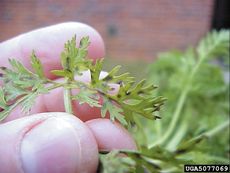
Carrot Leaf Spot Treatment: Learn About Cercospora Leaf Blight In Carrots
When leaf spots or lesions start to appear, you may be uncertain how to identify the leaf blight or how to quell its spread, especially in carrots. What is the proper carrot leaf spot treatment? The answer lies in this article. Click here to learn more.
By Shelley Pierce
-
Carrot Cotton Root Rot Control: Treating Carrot Cotton Root Rot Disease
Soil fungi combined with bacteria and other organisms create rich soil and contribute to plant health. Occasionally, one of these common fungi is a bad guy and causes disease. Cotton root rot of carrots stems from one of these bad guys. Learn more in this article.
By Bonnie L. Grant

